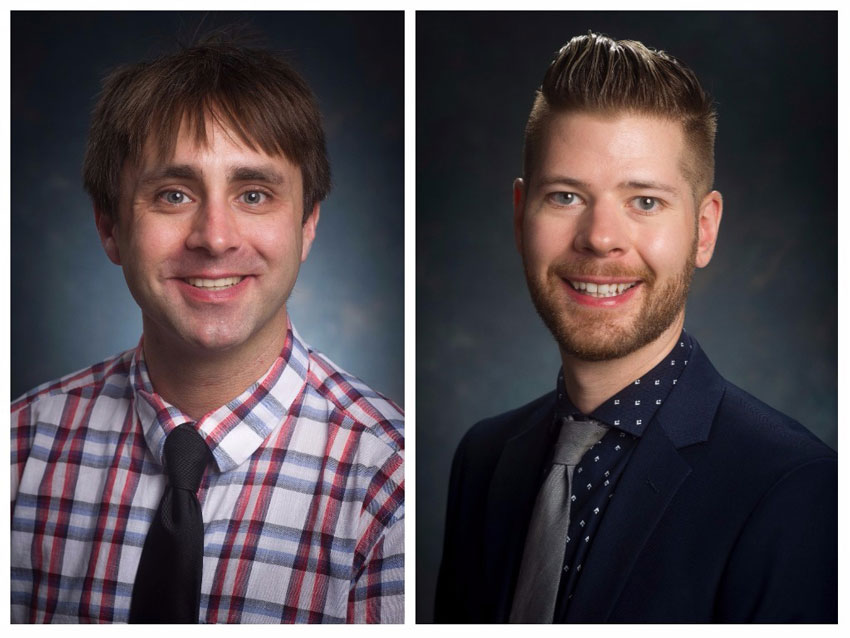A faculty member and a doctoral student at the UAB School of Optometry were awarded university funding for their research on dry eye disease.
Andrew Pucker, O.D., Ph.D., assistant professor, and Cameron Postnikoff, MASc, a doctoral student in the School of Optometry's Vision Science Graduate Program, received $10,000 as part of the UAB Faculty Development Grant Program for their proposal, “Tear Transcriptome Associations with Dry Eye Disease.”
Fifty percent of the funding will come from the UAB Office of the Provost, and the remaining half will be provided by the School of Optometry.
The UAB Faculty Development Grant Program provides seed money for research, scholarly activity and creative works conducted by junior faculty. The goal of the program is to provide funding for new efforts for which money is not generally available. This work occurs in collaboration with Jason J. Nichols, O.D., M.P.H., Ph.D.
Pucker says the purpose of their research is to explore the cause of dry eye disease.
“The dry eye research community currently lacks a full understanding of the mechanism leading to dry eye disease, a condition that causes millions of people to have chronic dry eye symptoms and eye surface damage,” Pucker says.
He and Postnikoff will examine how ribonucleic acids (RNA) or microRNA (miRNA), which are found in tears within molecules known as extracellular vesicles, play a role in the development of dry eye disease, says Postnikoff.
“The role of extracellular vesicles and their RNA/miRNA contents is poorly understood, but we hypothesize that these molecules play a pivotal role in both maintenance of health and development of disease at the ocular surface,” Postnikoff says.
Over the next year, Postnikoff and Pucker will conduct a pilot study examining those with dry eye disease and without and will compare and contrast the amount of RNA/miRNA in the tears.
“Dry eye disease is very common, but current treatments are insufficient to relieve symptoms for many patients,” Postnikoff says.
Because the disease is multifactorial, two people could experience the same symptoms with different underlying causes, he says.
“By better understanding the natural environment and how cells communicate with each other, we hope to understand what pathways may be involved in disease,” Postnikoff says. “Ultimately, this improved understanding of disease may lead to new therapies.”
